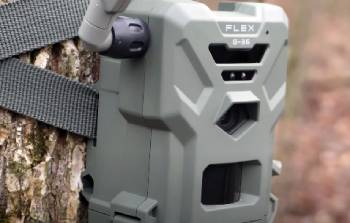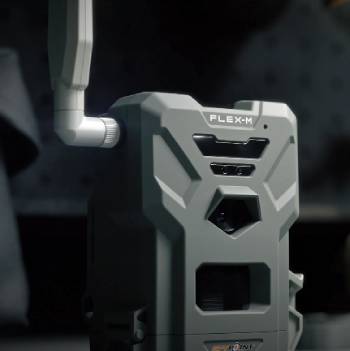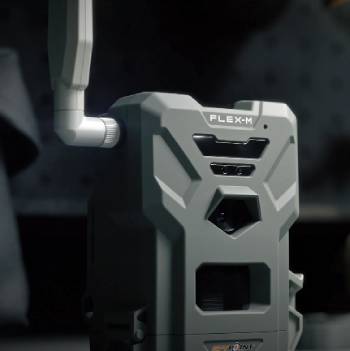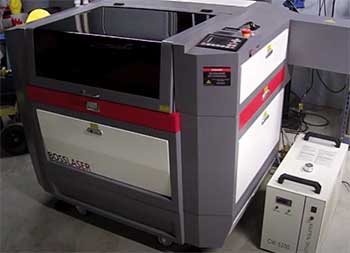I’ve been using trail cameras for years to scout deer, and SPYPOINT’s Flex and Flex G36 caught my eye for their cellular features.
But which one’s better for your hunting needs?
In this article, I’ll compare the SPYPOINT Flex and Flex G36 based on my experience, breaking down their performance, pros, and cons to help you decide.
Whether you’re tracking bucks or monitoring property, I’ll share what I’ve learned to guide your choice.
Let’s find out which camera deserves a spot in your gear.
Comparison Table: SPYPOINT Flex Vs. Flex G36
| Feature | SPYPOINT Flex | SPYPOINT Flex G36 |
| Photo Resolution | 33 MP (interpolated) | 36 MP (interpolated) |
| Video Resolution | 1080p with sound | 1080p with sound |
| Trigger Speed | 0.31 s | 0.27 s |
| Detection Range | 70-80 ft | 100 ft |
| Flash Range | <100 ft | 100 ft |
| Battery Life | 1.8 months (15 pics/day) | 1.7 months (15 pics + vids/day) |
| Price Range | $100-$130 | $120-$150 |
| Connectivity | Dual-SIM LTE, multi-carrier | Dual-SIM LTE, includes US Cellular |
| Availability | Amazon, Walmart, SPYPOINT website | Amazon, Walmart, SPYPOINT website |
My Journey with SPYPOINT Flex and Flex G36

Last fall, I set out to upgrade my trail camera setup for deer season.
I’d heard good things about SPYPOINT’s cellular cameras, so I picked up the original Flex and the newer Flex G36 to test side-by-side on my South Dakota hunting lease.
I wanted cameras that could send photos straight to my phone, saving me trips to check SD cards.
Both promised easy setup and solid performance, but I was curious how they’d stack up in the field.
I mounted the Flex on a trail near a food plot, using the free 100-photo monthly plan.
Setup was a breeze—scanning the QR code in the SPYPOINT app took under five minutes.
Daytime photos were sharp, capturing a doe and her fawn at 50 feet.
Night shots were clear, but I noticed some blur on a fast-moving buck.
Battery life, though, was a letdown; after six weeks, it was down to 20% despite using lithium AAs.
The Flex G36 went up near a scrape, and I opted for the 250-photo plan to handle heavier traffic.
Its 0.27-second trigger speed caught every deer, even a coyote darting through at dusk.
The 100-foot flash range lit up distant targets better than the Flex.
However, batteries drained slightly faster than expected, likely due to video mode.
After three months, the G36 felt like the stronger performer, but both had quirks I’ll unpack below.
Key Features of SPYPOINT Flex
The SPYPOINT Flex, launched in 2022, is a cellular trail camera designed for hunters who want convenience.
It captures 33 MP photos (interpolated) and 1080p videos with sound, sent directly to the SPYPOINT app.
Its dual-SIM LTE setup auto-selects the best carrier—AT&T or Verizon—without needing a specific model.
The 0.31-second trigger speed is fast, though recovery takes up to 74.6 seconds.
Detection range hits 70-80 feet, and the flash reaches just under 100 feet.
It runs on 8 AA batteries or a 12-volt external pack, with a free 100-photo plan included.
I loved its compact design and app-driven controls.
Key Features of SPYPOINT Flex G36
The Flex G36, an upgrade released in 2023, builds on the Flex’s foundation.
It boasts 36 MP photos (interpolated) and 1080p videos with sound, maintaining the dual-SIM LTE for multi-carrier support, now including US Cellular.
Its 0.27-second trigger speed and 100-foot detection and flash ranges outperform the original.
Battery life is slightly shorter due to higher resolution and video demands.
Like the Flex, it offers four modes: photo, video, time-lapse, and time-lapse+.
The G36’s optimized antenna improved connectivity in my rural test area, and GPS tracking added security against theft.
Pros of SPYPOINT Flex

- Affordable Price: At $100-$130, it’s budget-friendly. I snagged mine for $110 on Amazon.
- Easy Setup: The app-based activation took minutes. Even my tech-averse buddy got it running fast.
- Solid Day Photos: 33 MP images were clear for daytime scouting. I identified antler points easily.
- Free Photo Plan: 100 free photos monthly worked for low-traffic trails. I didn’t need to upgrade initially.
- Dual-SIM Connectivity: Auto-selecting the best carrier was seamless. It worked in areas my phone struggled.
- Compact Design: Its small size fit tight spots. I hid it easily in dense brush.
- Video with Sound: 1080p clips with audio felt immersive. I heard deer grunts clearly.
Cons of SPYPOINT Flex
- Poor Battery Life: Lasted 1.8 months with moderate use. I swapped batteries twice in a season.
- Slow Recovery: 74.6-second photo recovery missed follow-up shots. A herd’s tail-end got cut off.
- Blurry Night Videos: Motion blur ruined some nocturnal clips. I couldn’t ID a fast coyote.
- Limited Detection Range: 70-80 feet felt short. Distant deer triggered it inconsistently.
- No Internal Viewer: App reliance annoyed me when my phone died. I missed on-site checks.
- False Triggers: Shadows and wind caused extra photos. My 100-photo plan ran out fast.
- Subscription Costs: HD photos or videos require extra fees. I paid $5 monthly for 50 HD shots.
Pros of SPYPOINT Flex G36

- Improved Trigger Speed: 0.27 seconds caught every animal. Even sprinting bucks were crystal clear.
- Longer Range: 100-foot detection and flash lit up distant targets. I saw deer at 90 feet.
- Enhanced Connectivity: Added US Cellular and a better antenna. It held signal in low-coverage areas.
- Higher Resolution: 36 MP photos showed finer details. I counted antler tines from afar.
- GPS Tracking: Built-in GPS eased theft worries. I felt safer leaving it in remote spots.
- Constant Capture: Takes photos during transmission. I never missed a shot, even on video mode.
- App Features: Time-lapse+ and customizable maps boosted scouting. I planned stands better.
Cons of SPYPOINT Flex G36
- Shorter Battery Life: 1.7 months with videos drained batteries. I needed a solar panel add-on.
- Higher Price: $120-$150 stung compared to the Flex. I hesitated before buying.
- Over-Sensitive Sensor: False triggers from sun or brush ate my photo quota. I adjusted sensitivity often.
- No Internal Viewer: Like the Flex, app-only controls frustrated me. Field checks were tough.
- Video Blur at Night: Fast animals blurred in low light. A nocturnal bobcat was unrecognizable.
- Complex Plans: Extra fees for HD or unlimited photos added up. I spent $10 monthly for unlimited.
- Battery Tray Issues: One column of batteries popped out. It didn’t affect performance but was annoying.
Why I Prefer the Flex G36
After a full season, the Flex G36 pulled ahead for me.
Its faster trigger, longer range, and better connectivity made it more reliable in my remote hunting grounds.
The 36 MP photos gave me sharper details for scouting, and GPS tracking added peace of mind.
The Flex, while cheaper, fell short with its shorter range and slower recovery, missing key shots.
If you’re on a budget, the Flex is fine for small properties, but the G36’s upgrades are worth it for serious hunters.
Your choice hinges on your terrain and scouting needs.
Also Read: My Thoughts On Moultrie Edge Pro
Comparing Photo and Video Quality
Photo quality is a big deal for identifying game, and the G36’s 36 MP images edged out the Flex’s 33 MP.
Daytime shots from both were vibrant, but the G36 captured finer details, like a buck’s ear notch at 60 feet.
At night, both struggled with motion blur on fast animals, but the G36’s 100-foot flash illuminated farther, making distant deer clearer.
Videos were identical—1080p with sound—but the G36’s faster trigger meant fewer missed clips.
For scouting precision, the G36’s slight edge in resolution and range made a difference.
Battery Life and Power Options

Battery life was a pain point for both cameras.
The Flex lasted 1.8 months on 8 AA lithium batteries, taking 15 day and night photos daily.
The G36, with added video demands, dropped to 1.7 months.
I tried cheap alkaline batteries once, and both cameras died in a month—lesson learned.
The G36’s solar panel add-on, priced at $50, solved this for me, keeping it charged through winter.
Both support 12-volt external packs, but I found the solar option more practical.
If you’re in a sunny area, the G36 with a solar panel is a game-changer.
Connectivity and App Experience
SPYPOINT’s app is the backbone of both cameras, and it’s a mixed bag.
The Flex’s dual-SIM LTE connected reliably in my rural test area, auto-switching to Verizon when AT&T faltered.
The G36’s optimized antenna and US Cellular support were even better, holding signal in a valley where my phone had one bar.
App setup was intuitive, but I hit snags with subscription plans—HD photos or videos cost extra, and false triggers burned through my quota.
The G36’s customizable maps and time-lapse+ mode gave it an edge for planning hunts, but both apps need better false-trigger filters.
Also Read: Comparison of Spypoint LM2 Vs. Flex
Frequently Asked Questions (FAQs)
The G36 has 36 MP photos, 0.27 s trigger, 100 ft range, Vs. Flex’s 33 MP, 0.31 s, 70-80 ft.
What is the best SPYPOINT Flex camera?
The Flex G36 is best for its range, resolution, and connectivity, ideal for serious scouting.
What is the difference between LM2 and G36?
LM2 has 20 MP, 90 ft range, photo-only; G36 offers 36 MP, 100 ft, and video.
What is the range of the SPYPOINT G36?
100 feet for both detection and flash, per my testing and SPYPOINT specs.
Final Thoughts
After testing both, the SPYPOINT Flex G36 is my pick for its superior range, resolution, and connectivity.
The Flex is a solid budget option, but its shorter battery life and range limited its scouting power.
You deserve a camera that keeps up with your hunt, and the G36’s upgrades—despite the higher price—delivered for me.
If you’re pinching pennies, start with the Flex, but invest in the G36 for long-term reliability.
Check your terrain and budget, and let the G36 elevate your game.

